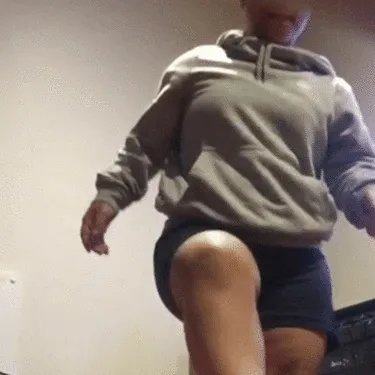Repositioning the home of social change as a vanguard of democracy
In partnership with change.org
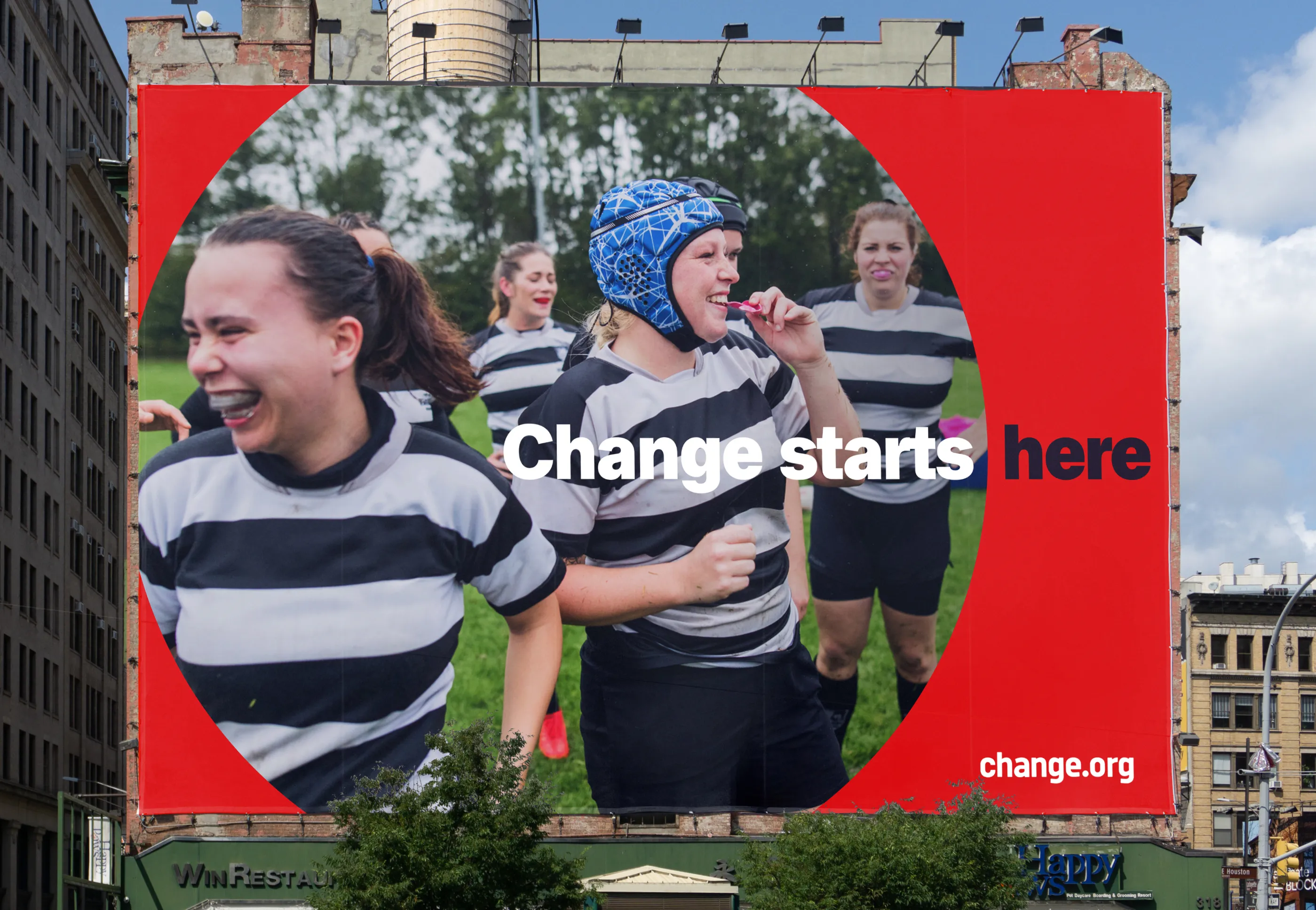
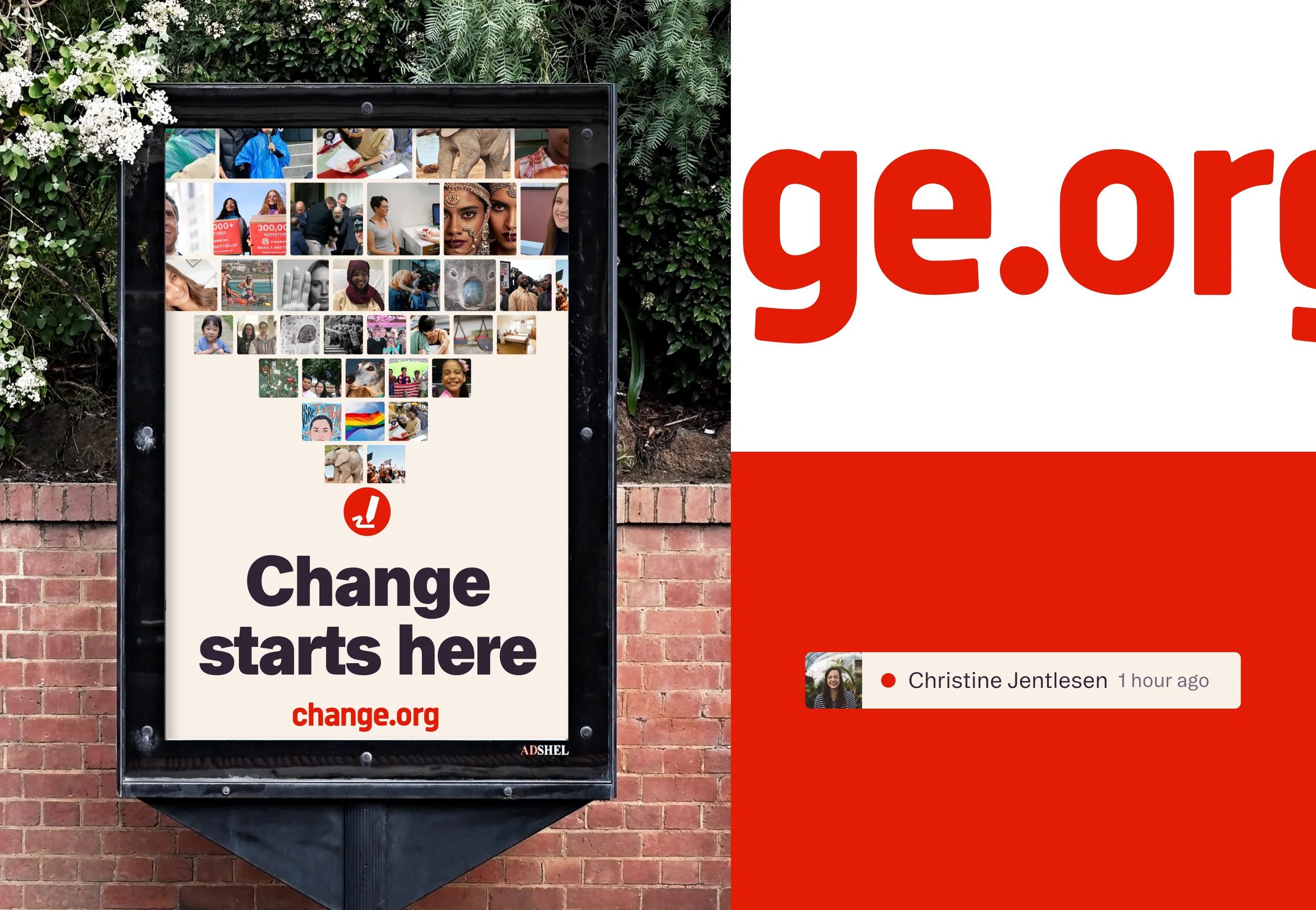
Yesterday
Change.org is the world’s largest platform for social change, with over 550 million users globally. After 17 years since founding, they needed a more contemporary expression of their brand—one that could inspire and invite everyday people, while helping Change.org stay ahead in a shifting landscape where participation, access to credible information, and responsiveness from decision-makers are all critical to a healthy democracy.
As the idea of a brand repositioning gained momentum internally, it became clear that lasting change for the organisation would require a systems-level approach—inside and out.
Change starts here.
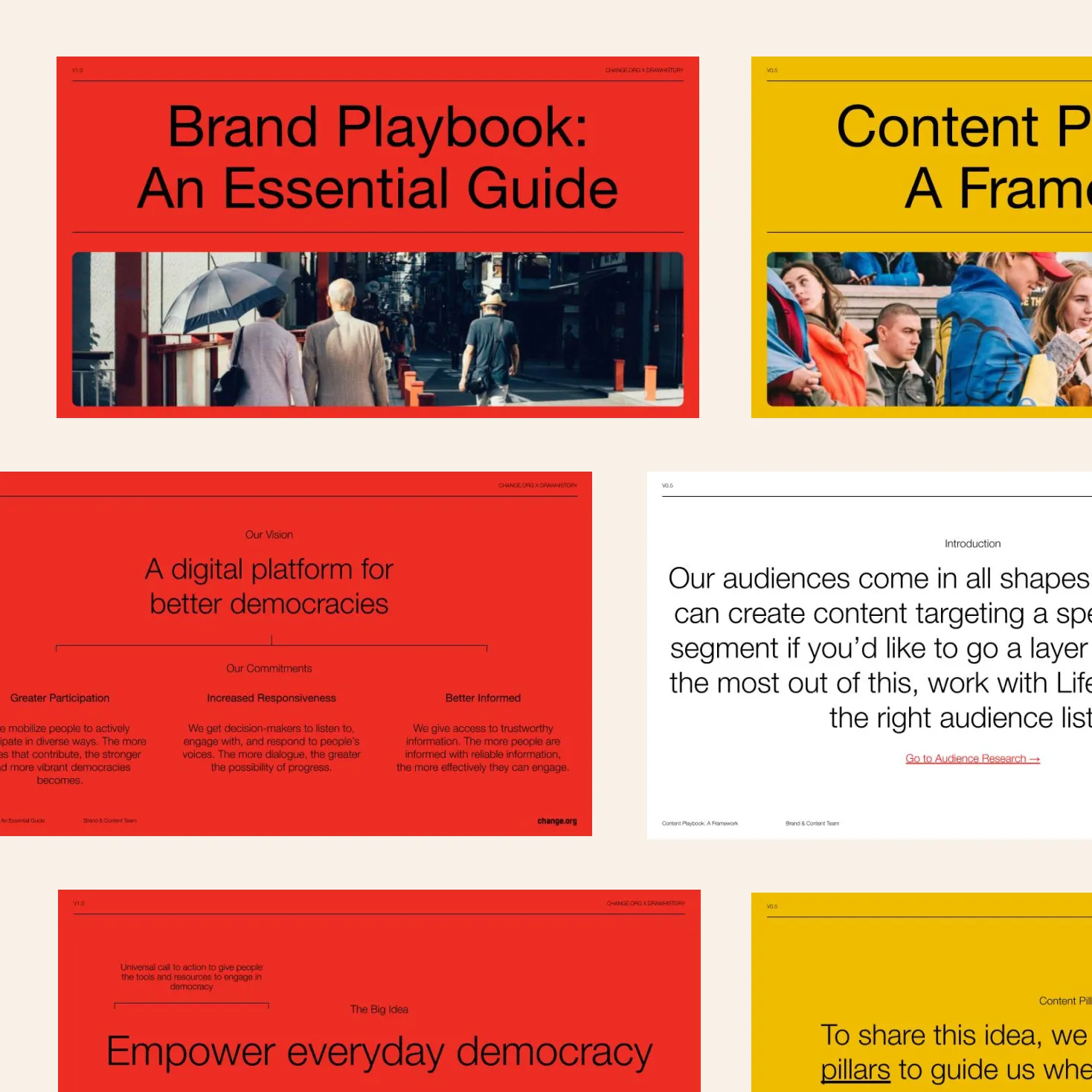
Today
The brand hadn’t changed much since its 2007 founding, and we knew from research that it was losing relevance and connection with people over time—jeopardising their ability to gain users and speak to decision-makers.
Because Change.org’s work relies heavily on public trust in the power of petitions, we also needed to understand broader attitudes and behaviours toward civic participation. A new brand position would only hold if it reflected how people think and feel today.
We partnered with country teams across 20+ markets to explore perceptions of both Change.org and democracy itself as a universal concept. This included brand interviews, audience segmentation analysis, and quantitative surveys reaching thousands of people, helping surface shared tensions and possibilities across different regions and realities.
Visually, Change.org’s brand had also become inconsistently interpreted across petitions, socials, print and campaigns. As a web-native platform, staying contemporary alongside the speed of the internet was a perpetual challenge.
Through collaboration with Change.org’s staff and users around the world, we realised they were missing a single clear story to connect with people, whatever the type of change they wanted to make.
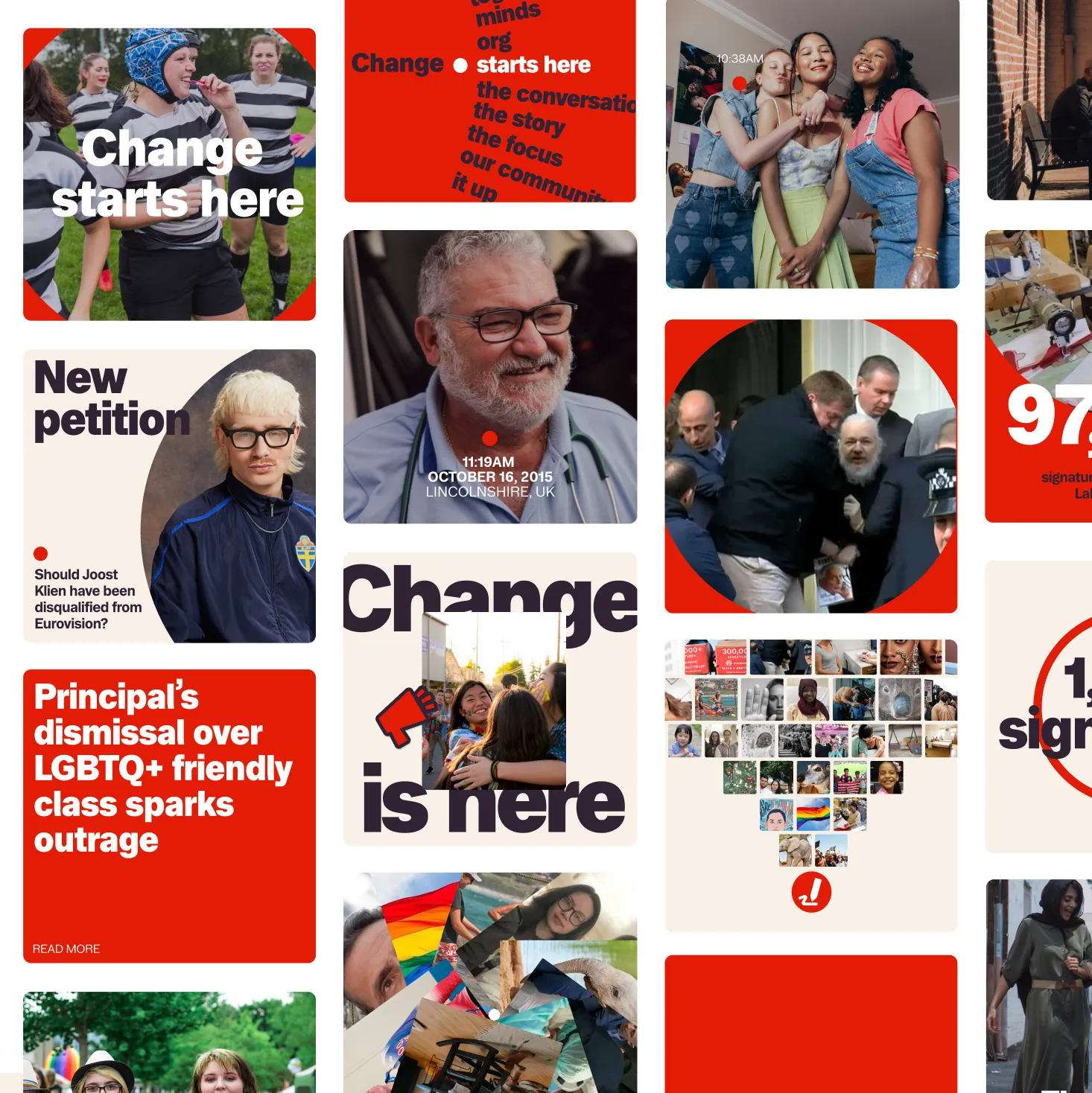
The team not only provided ideas grounded in design culture, but brought refreshing pragmatism in service of our goals—nudging us to be braver to meet the moment and pushing back when necessary. It’s easy to miss the mark with this kind of work, but they made sure we moved together in partnership with the right people. Thanks to their team, we now have a much more robust identity design system to bring our new brand story to life with confidence.
JEFFREY EFFENDI, HEAD OF BRAND & COMMUNICATIONS, CHANGE.ORG
Tomorrow
As insights were brought to Change.org’s leadership, one idea emerged as a foundation for the future: “empower everyday democracy.”
The strategy was rooted in a simple insight: democracy isn’t just about elections or politics—it’s built on many acts of hope. It resonates most when it’s not treated as an abstract principle, but as something lived—personal, immediate, and close to home. People already take part in democracy, often without naming it: volunteering, signing petitions, attending meetings, or staying informed about local issues.
Democracy doesn’t have to be big or divisive. It can start small and local. Change.org’s role is to help people recognise these everyday acts—and make it easier to keep going.
To bring this to life, we developed a creative north star: change starts here—an invitation for anyone to use the platform to participate in everyday democracy.
We built on Change.org’s distinctive assets while reimagining their expression for today. The core concept, "the starting point," uses the dot in "change.org" as a symbol of action and possibility, forming a cohesive global identity.
The rebrand creates an iconic image. We executed this across a range of surfaces, with brand, communication, and product designers working together to ensure consistency and clarity.
Backed by a brand playbook, messaging frameworks, and an internal readiness program, Change.org teams are now equipped to tell this story in more than 20 countries—reimagining how they connect over 500 million users with the people and institutions that shape their lives.
This work was made in collaboration with DrawHistory, which is now part of Today
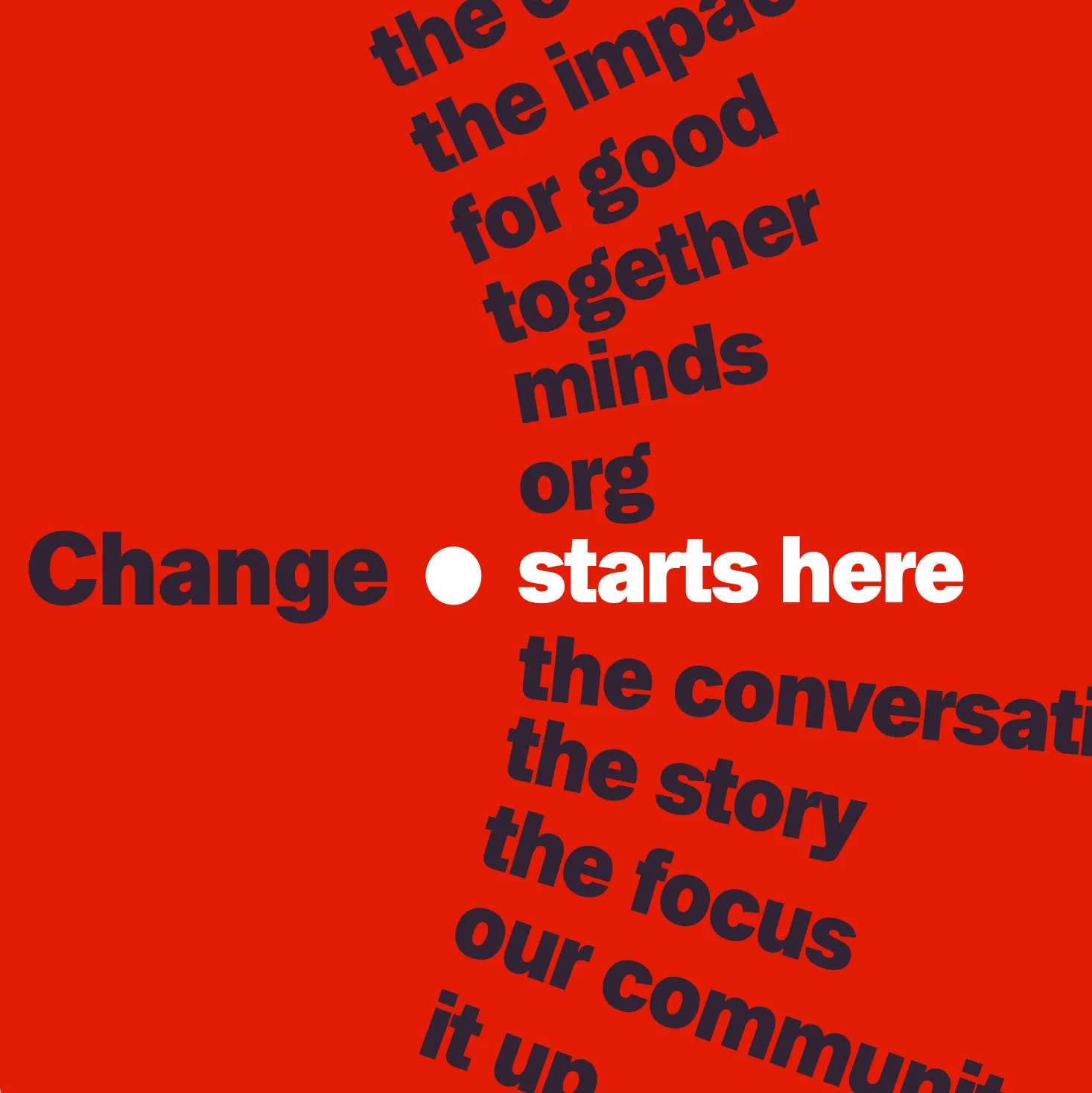
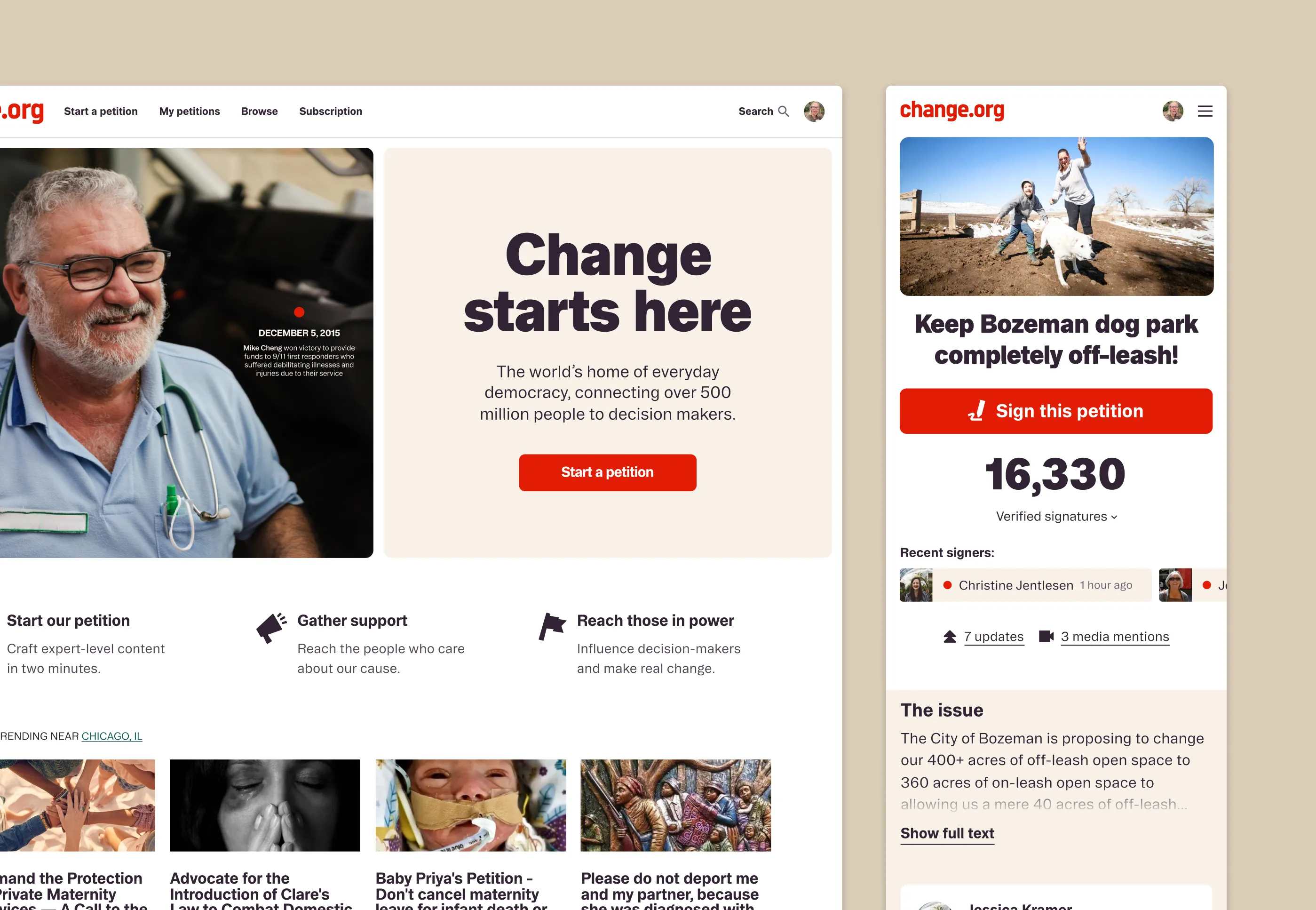
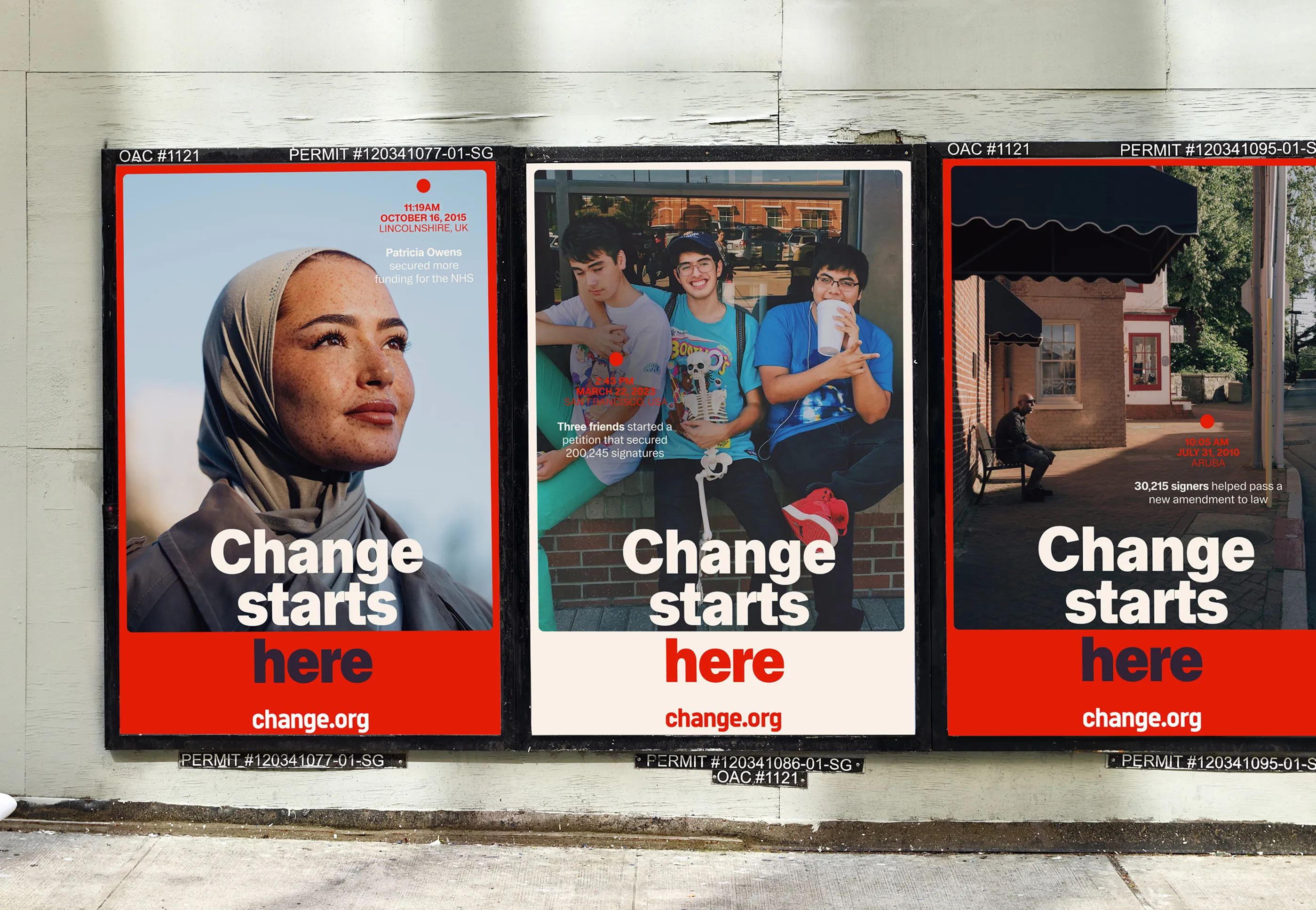
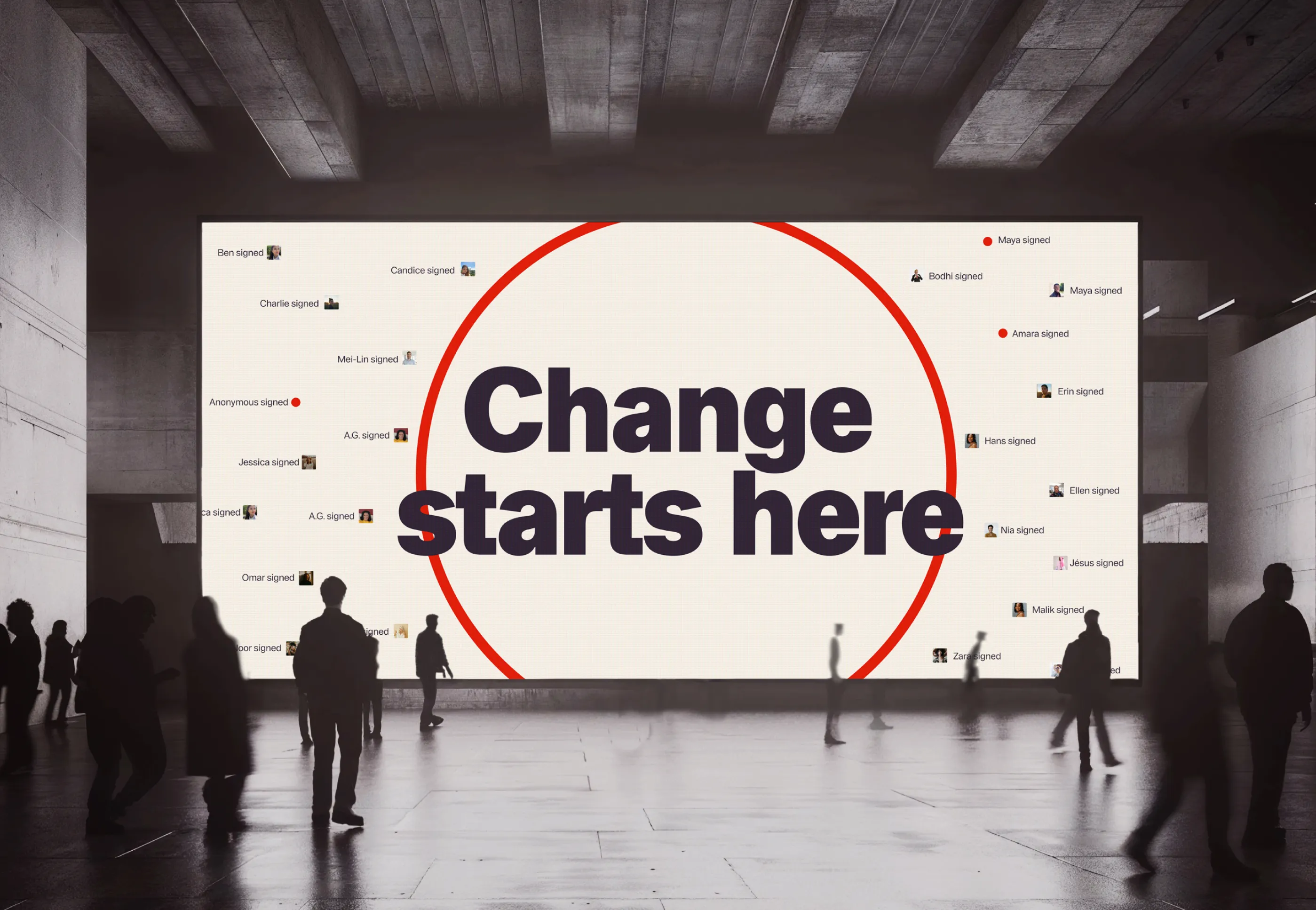

Get in touch
Learn more about human-centred brands. Chat to Steph today.
Steph Little
Senior Partnerships Director
Next Case Study
Nike:
Co-creating an equitable and inclusive future for football
